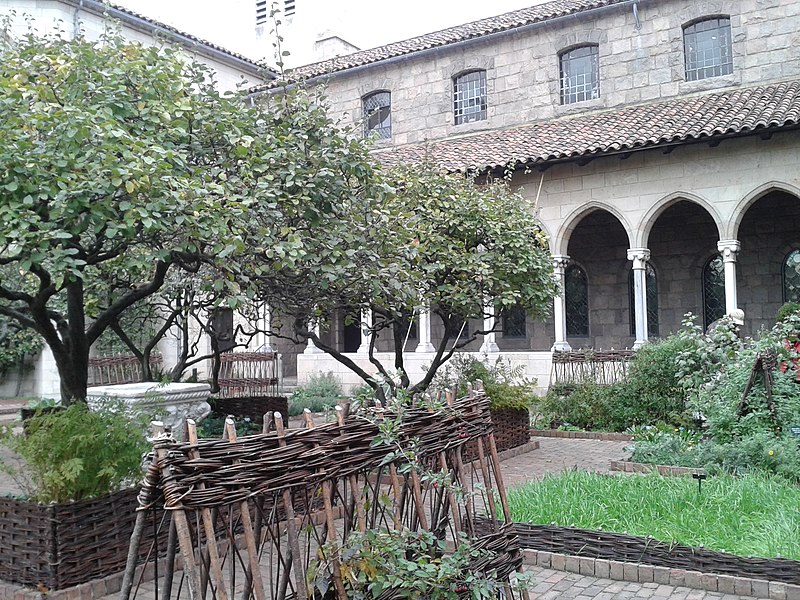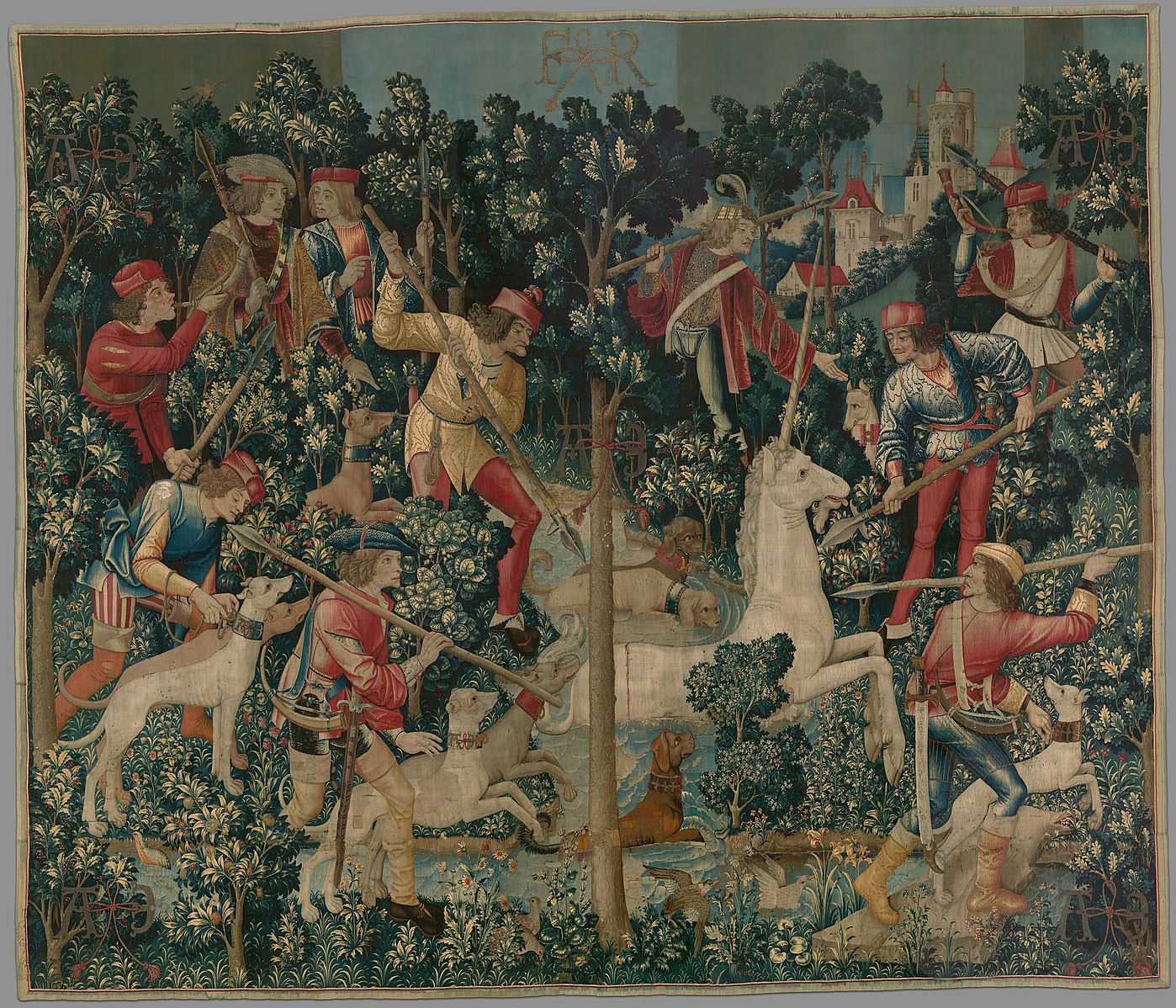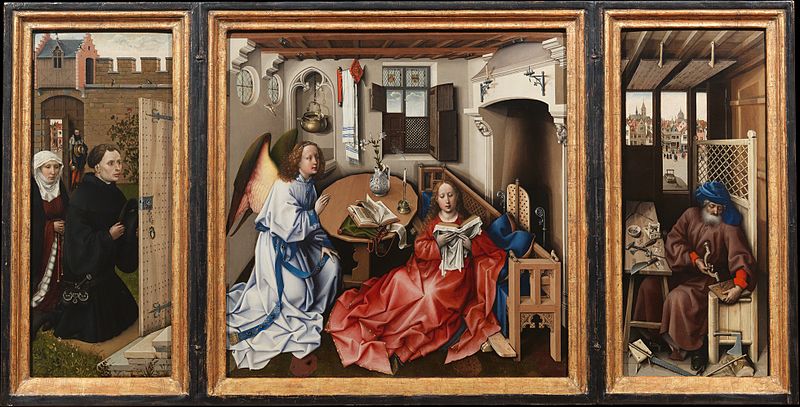If you’re looking for a unique experience in New York City, then the Cloisters Museum should be at the top of your list. This museum is unlike any other in the city. It’s a combination of art, history, and culture, brought together in a stunning setting that will leave you captivated.
The Cloisters Museum is an incredible site to behold and a must-see destination for any tourist or local exploring the city of New York. It is a branch of the Metropolitan Museum of Art, located in Fort Tryon Park in Uptown Manhattan. This museum is dedicated to the art and architecture of the European Middle Ages, featuring a stunning collection of medieval art, sculpture, and architecture. It also boasts a lush and peaceful garden that provides respite from the hustle and bustle of the city.
Cloisters is housed in a building designed to resemble a medieval monastery. It is a source of immense pride for all those living within New York City and its surroundings. The museum houses five thousand works of art from all over the world that range from sculptures, paintings, and manuscripts to tapestries as well as other cultural relics. Many pieces of artwork have been carefully preserved in the museum for centuries and contain a lot of historic value. It is an important part of the city’s culture and heritage, giving citizens and tourists access to an impressive collection of artworks and artifacts that they otherwise would not be able to experience first-hand.
In this post, we’ll explore the beauty and history of the Cloisters Museum and Garden. It aims to provide a comprehensive guide for potential visitors to this incredible museum, so you can plan your own visit to this destination. Have a look!
History of the Cloisters Museum
Many people believe that the Cloisters Museum was created by John D Rockefeller Jr, who donated land to New York City for public use. But the museum’s history in fact begins with George Grey Barnard, Rodin’s student and a prominent American sculptor.
Bernard opened a museum exhibiting his personal collection of medieval art. He called it, ‘The Cloisters’. The word cloisters refers to a covered walkway around a large open courtyard, providing access to different monastic buildings. However, the church-like structure housing Bernard’s collection did not represent the term.
In the 1920s due to financial difficulties, John D. Rockefeller Jr. took over the museum. He donated it along with a piece of land to the Metropolitan Museum of Art with the condition that a museum be built to house the collection. He also provided most of the funds for the construction of the museum.
The museum was designed by architect Charles Collens who was inspired by French medieval architecture when designing it. Collens consulted numerous historical books while creating his plans and utilized his expertise in Gothic design to ensure that the structure would be aesthetically pleasing but also true to its intended purpose – providing a home for artworks and artifacts from various eras in European history.
The Cloisters Museum opened its doors in 1938 and immediately gained popularity due to its novel design and impressive collections. From its opening day onwards, it has been dedicated to preserving, exhibiting, and educating its visitors about medieval artwork from all over Europe. PS: Did you know New York also has a Transit Museum?
Exploring the Cloisters Museum
The museum houses an incredible collection of artworks such as sculptures, paintings, manuscripts, tapestries, tiles, furnishings, and much more from both French and Italian medieval cultures located throughout different areas in Europe. In total there are approximately five thousand individual works on display, which makes it one of the largest collections in North America dedicated solely to European medieval artworks and artifacts.
Highlights of the Museum’s Artwork and Artifacts
The collections currently on display at The Cloisters include some truly remarkable works ranging from luxurious illuminated manuscripts from gothic periods to Renaissance paintings. Some of the highlights include:
The Unicorn Tapestries
This series of seven tapestries depicts the hunt of the mythical unicorn and is considered one of the most significant works of art in the museum’s collection. The tapestries are made of wool, silk, and silver and gold thread, and they date from the late 15th century.
The Annunciation Triptych
This is a 14th-century triptych from the Netherlands that depicts the Annunciation, the biblical event in which the angel Gabriel announced to the Virgin Mary that she will give birth to Jesus.
The Cloisters Cross
This 12th-century cross is made of gold, enamel, and precious stones. It is one of the most important works of art in the museum’s collection and is considered a masterpiece of Romanesque metalwork.
The Treasury
The Cloisters’ Treasury houses a collection of over 300 medieval objects, including reliquaries, jewelry, and other precious objects.
The Gothic Chapel
The Cloisters’ Gothic chapel is a highlight of the museum’s architectural collection. The chapel was constructed in the 13th century and transported to the museum from France in the 1930s. It features intricate stonework, stained glass windows, and a wooden altarpiece.
The Merode Altarpiece
This triptych altarpiece was created in the early 15th century, and it depicts the Annunciation of the Virgin Mary. It is made of oak panels and features intricate details and symbolism.
Unique Features of The Cloisters
The Cloisters offers many unique features not found at other museums within New York City or even across North America. It is located in Fort Tryon Park, which provides stunning views of the Hudson River and the surrounding landscape. The views from the museum are breathtaking and add to the overall experience of visiting the museum.
The Cloisters’ building itself is a unique feature, as it was designed to resemble a medieval monastery. The structure is made up of several interconnected galleries, which are arranged around several peaceful cloisters. The architecture of the building is a fascinating example of medieval-inspired design in a modern context.
The gardens surrounding it are an integral part of the museum’s experience, and they are designed to evoke the horticulture of medieval Europe. The gardens feature over 500 species of plants, including herbs, flowers, and vegetables, and they are arranged in a variety of styles, including medieval kitchen gardens, herb gardens, and cloister gardens.
The famous gardens spread around four acres surrounding the museum and are filled with sculptures portraying scenes from popular literature. They also feature miniature recreations of ancient chapels, complete with functioning door frames just like how they were used during the medieval times. Moreover, there are also several tranquil water fountains scattered throughout these gardens, giving visitors plenty more reasons to wander around this magical place during their visit.
The museum is dedicated to the art and architecture of medieval Europe, with a particular focus on the Romanesque and Gothic periods. It is committed to preserving and restoring its collections, and has a dedicated conservation department that uses state-of-the-art techniques and technologies to keep the artifacts in excellent condition. Visitors can observe conservation work in progress in the museum’s Visible Storage area.
In 2011, the museum introduced two new visitor amenities — the Audio Guide and a café.
The Audio Guide is available in several languages and provides a detailed description of the museum’s collections, including information about individual artworks and artifacts. It also provides historical and cultural context for the exhibits and helps visitors to better understand the significance of the works on display. The audio guide is available for rent at the museum’s entrance, and it is included in the admission fee.
The café here serves a variety of refreshments, including coffee, tea, pastries, and sandwiches. The café is located in a beautiful setting overlooking the Hudson River and provides visitors with a relaxing place to take a break and enjoy the view.
Programs and Events
The Cloisters offers a variety of unique programs for both adults and children, covering topics related to art history such as conservation practices or workshops teaching skills like calligraphy or stone carving. Additionally, special events are held frequently at the museum such as concerts or lectures by guest speakers discussing aspects related either directly or indirectly to the medieval culture.
Workshops & Educational Opportunities
The museums offer various educational opportunities for school children or anyone else looking to broaden their knowledge about European medieval culture and art history.
- Hands-on art-making workshops: These workshops allow visitors to create their own art inspired by the museum’s collections. The workshops are led by professional artists and educators, and are suitable for all ages and skill levels.
- Gallery talks and tours: The museum offers guided tours and gallery talks led by curators and educators. These talks provide visitors with a deeper understanding of the museum’s collections and the historical context in which they were created.
- School and group programs: The museum offers educational programs for school and other groups. These programs are designed to meet the needs and interests of each group and are led by professional educators.
- Family programs: The museum offers a variety of programs designed for families and children of all ages. These programs include storytelling, art-making activities, and interactive tours.
Special Exhibits & Events
The museum also hosts special events and exhibits throughout the year. These include:
- Concerts and performances featuring music and dance from the medieval period and beyond.
- Occasional film screenings related to medieval art and culture, providing visitors with a unique perspective on the era.
- The museum hosts several special exhibits each year, featuring works of art and artifacts from the museum’s collections as well as from other institutions.
Tips for Visiting the Cloisters Museum
Visitors should check out specific times prior to visiting The Cloisters since certain days may be more crowded than others, depending on what type of events are occurring at that particular moment. It’ll help you avoid any unwanted hustle and bustle while exploring this magnificent place. Additionally, try visiting early morning when it isn’t so crowded since they usually come flocking towards midday onwards, so you’ll have enough time to explore without feeling overwhelmed.
Make sure to take advantage of their audio guides, which provide detailed descriptions regarding each art piece located inside, enabling you to gain a greater appreciation. You’ll learn some entertaining facts too which might otherwise go unnoticed unless you read through explanatory text often found next to each artifact being exhibited. It allows you to spend less time reading signs and exploring each artwork more deeply.
When planning a trip there, make sure to consult online resources such as the official website from where you can find information about current exhibits taking place, pricing, admission discounts, and special events like concerts, lecturers, playgrounds courses.
Eager to learn about the fabulous history of New York City? Check this post.
Conclusion
With a collection of over 5,000 works of art and artifacts from the medieval period, the Cloisters Museum provides a beautiful and serene setting for visitors to explore and learn. It plays an important role in preserving and promoting knowledge of the medieval art and culture. The museum’s collections are also a valuable resource for scholars and researchers and not just the general public.
The museum’s location and setting offer a peaceful and beautiful escape from the chaos of our urban life. Whether you are an art enthusiast, a history buff, or simply looking for a relaxing day out, the Cloisters Museum is definitely worth a visit.



